2018 上半年贵州教师资格初中英语学科知识与教学能力真
题及答案
一、单项选择题(本大题共 20 小题,每小题 2 分,共 40 分)
在每小题列出的四个备选项中选择一个最佳答案。
1. The similarity between the English consonants/p/,/b/,and/m/is that they are
all_________.
A. fricative
B. plosive
C. labial-dental
D. bilabial
2. Which of the following is a back vowel in English?
A./
ɜː/
B./
ɔ:/
C./
ʌ/
D./e/
3. There is only one playground slide in this school, so the students have to
take
_________
to use it.
A. turns
B. the turn
�
C. a turn
D. the turns
4. Out of everyone's expectation, Johnson suddenly returned _________ a rainy
night.
A. at
B. in
C. on
D. during
5. She_________
it very well when she described her younger brother as
"brilliant but lazy".
A. put
B. made
C. assumed
D. interpreted
6. We don't think
possible to master a foreign language without much memory
work.
A. this
B. that
C. its
�
D. it
7. _________the same mistakes in the annual financial report again made his
boss very angry.
A. His having made
B. He having made
C. He had made
D. He has made
8. I would have told him the answer, but I
_________so busy then.
A. had been
B. were
C. was
D. would be
9. The use of the expression "I won't bore you with all the details..."
indicates that people
usually observe
the_________Maxim in their daily
conversations.
A. Quantity
B. Quality
C. Relevance
D. Manner
�
10. Which of the following is an evaluative move used by a teacher in class to
comment on students’performance?
A. Initiation move.
B. Follow-up move.
C. Framing move.
D. Repair move.
11. Which of the following activities is NOT typical of the Task-Based
Language Teaching method?
A. Problem-solving activities.
B. Opinion exchange activities.
C. Information-gap activities.
D. Pattern practice activities.
12. If a teacher shows students how to do an activity before they start doing
it, he/she is using the technique of_________.
A. presentation
B. demonstration
C. elicitation
D. evaluation
�
13. When a teacher asks students to discuss how a text is organized, he/she is
most likely to help them_________.
A. evaluate the content of the text
B. analyze the structure of the passage
C. understand the intention of the writer
D. distinguish the fact from the opinions
14. Which of the following practices can encourage students to read an article
critically?
A. Evaluating its point of view.
B. Finding out the facts.
C. Finding detailed information.
D. Doing translation exercises.
15. Which of the following is a display question used by teachers in class?
A. If you were the girl in the story, would you behave like her?
B. Do you like the story Girl the Thumb, why or why not?
C. Do you agree that the girl was a kind-hearted person?
D. What happened to the girl at the end of the story?
16. Which of the following would a teacher encourage students to do in order
to develop their cognitive strategies ?
�
A. To make a study plan.
B. To summarize a story.
C. To read a text aloud.
D. To do pattern drills.
17. Which of the following exercises would a teacher most probably use if
he/she wants to help students de- velop their discourse competence.
A. Paraphrasing sentences.
B. Translating sentences.
C. Unscrambling sentences.
D. Transforming sentences.
18. The advantages of pair and group work include all of the following
EXCEPT_________.
A. interaction with peers
B. variety and dynamism
C. an increase in language practice
D. opportunities to guarantee accuracy
19. Which of the following should a teacher avoid when his/her focus is on
developing students' ability to use words appropriately?
A. Teaching both the spoken and written form.
�
B. Teaching words in context and giving examples.
C. Presenting the form, meaning, and use of a word.
D. Asking students to memorize bilingual word lists.
20. Which of the following practices is most likely to encourage students'
cooperation in learning?
A. Doing a project.
B. Having a dictation.
C. Taking a test.
D. Copying a text.
阅读 Passage l,完成 21~25 小题。
Passage 1
In recent years, however, society has come to understand the limitations
of schools that merely sort and
rank students. We have discovered that
students in the bottom one-third to one-half of the rank order—plus all who
drop out before being ranked--fail to develop the foundational reading,
writing, and mathematical
proficiencies needed to survive in, let alone
contribute to, an increasingly technically complex and ethnically
diverse
culture. So today, in asking schools to leave no child behind, society is
asking that educators raise up
the bottom of the rank-order distribution to a
specified level of competence. We call those expectations our"academic
achievement standards". Every state has them, and, as a matter of public
�
policy, schools are to be
held accountable for making sure that all students
meet them.
To be clear, the mission of sorting has not been eliminated from the
schooling process. For the foresee-able future, students will still be ranked
at the end of high school. However, society now dictates that such
a
celebration of differences in amount learned must start at a certain
minimum level of achievement for all.
The implications of this change in mission for the role of assessment are
profound. Assessment and grad-ing procedures designed to permit only a few
students to succeed ( those at the top of the rank-order distribu-tion) must
now be revised to permit the possibility that all students could succeed at
some appropriate level.
Furthermore, procedures that permitted( perhaps even encouraged)some students
to give up in hopelessness
and to stop trying must now be replaced by others
that promote hope and continuous effort. In short, the entire
emotional
environment surrounding the prospect of being evaluated must change,
especially for perennial low achievers.
The students' mission is no longer merely to beat other students in the
achievement race. At least part of
their goal must be to become competent.
Teachers must believe that all students can achieve a certain level
of
academic success, must bring all of their students to believe this of
themselves, must accommodate the fact
that students learn at different rates
by making use of differentiated instruction, and must guide all
students toward the attainment of standards.
�

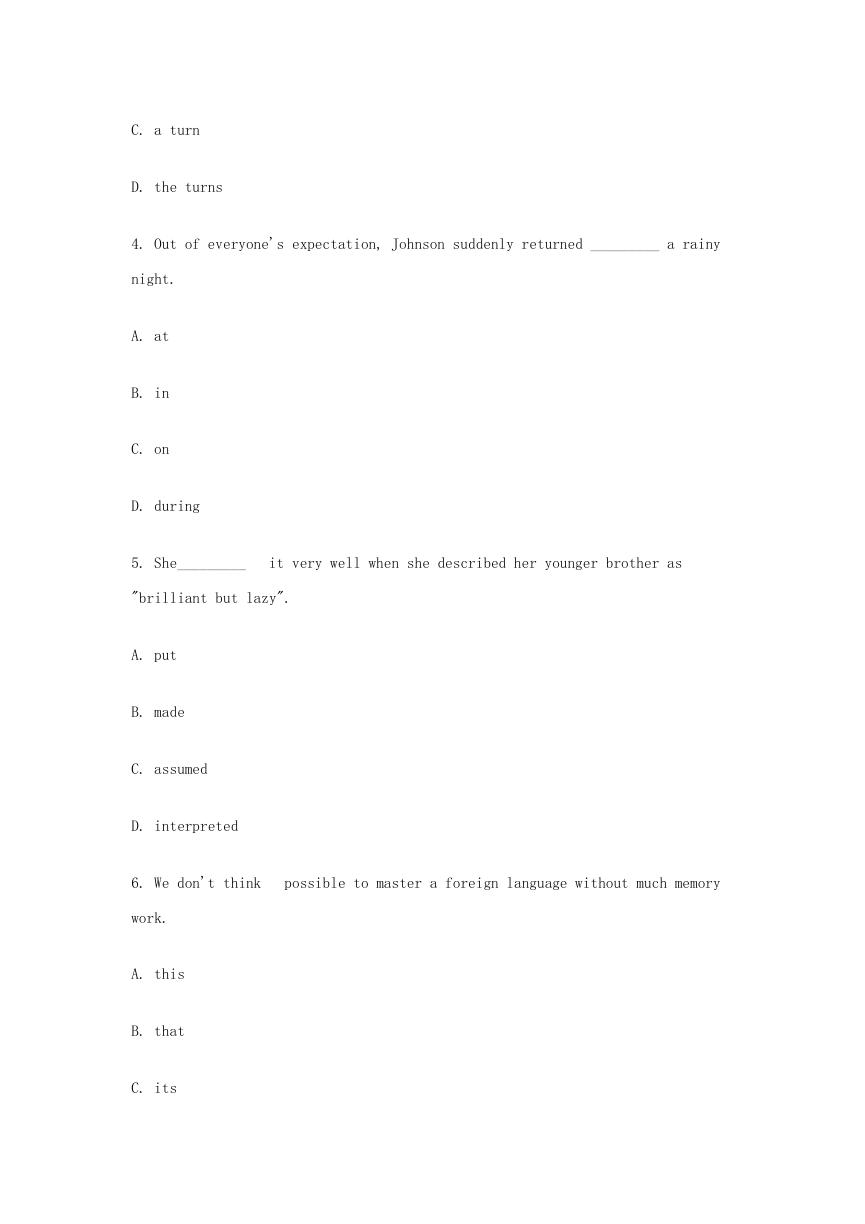
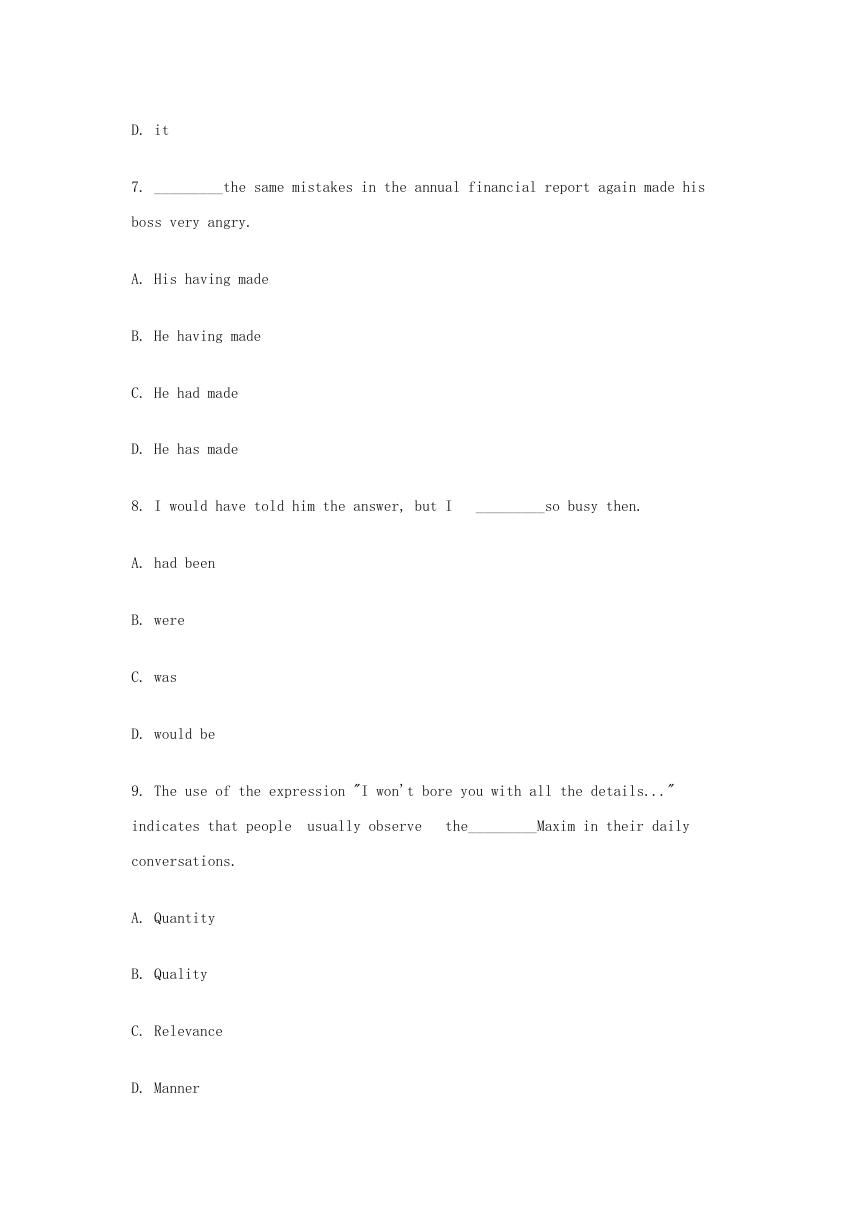
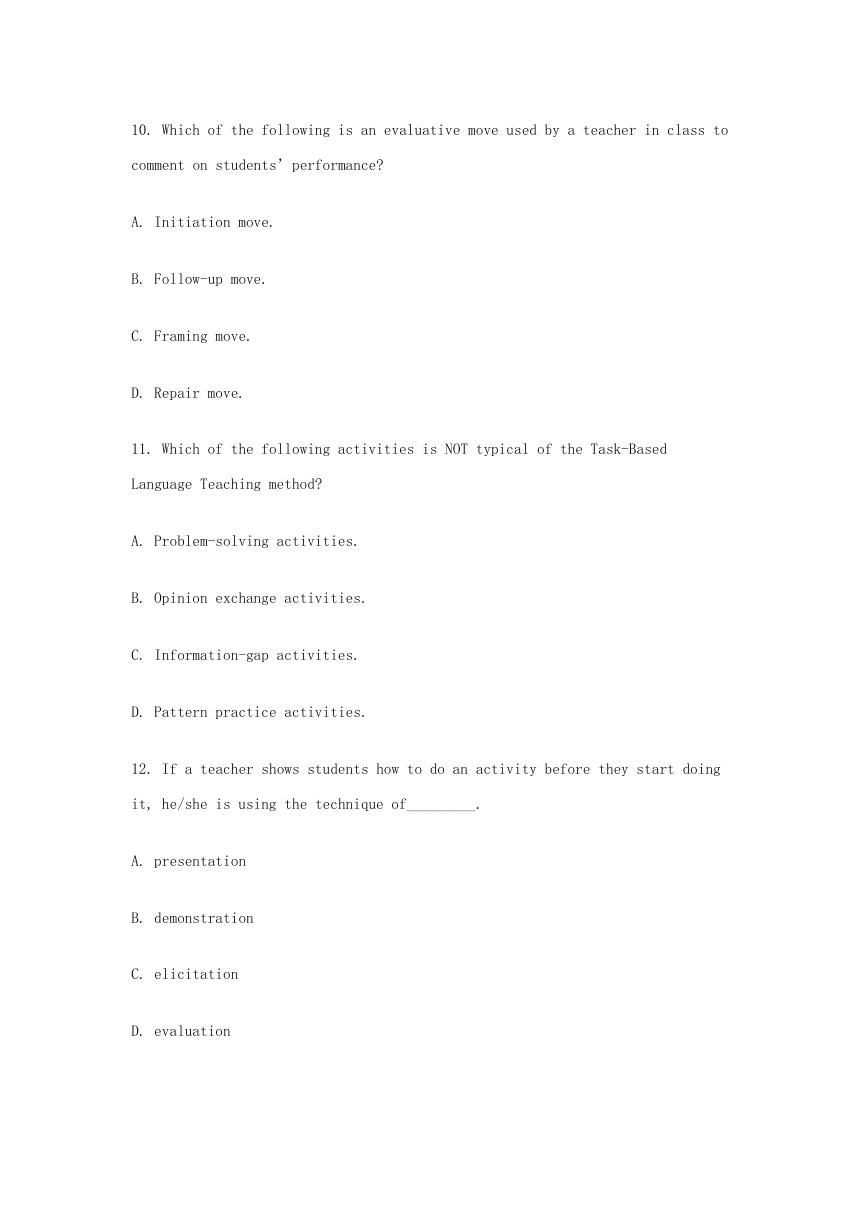

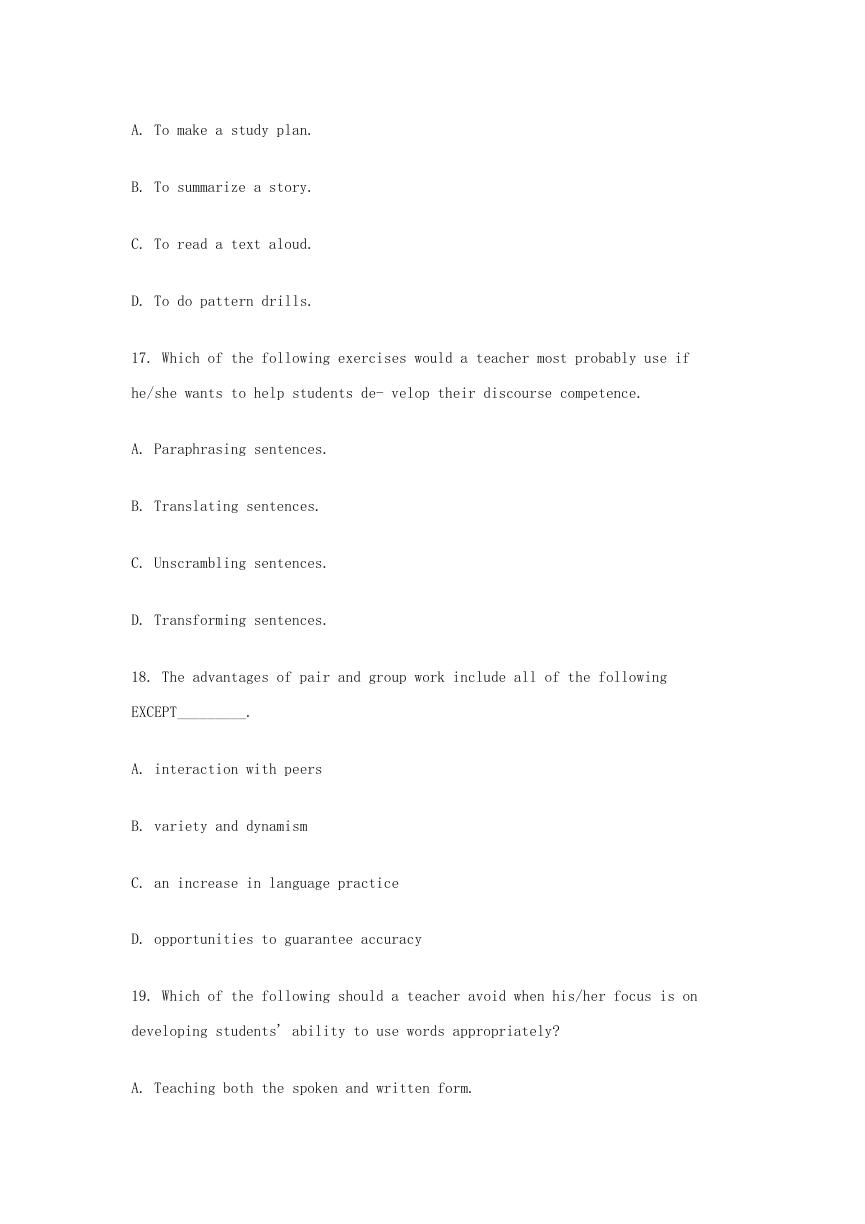
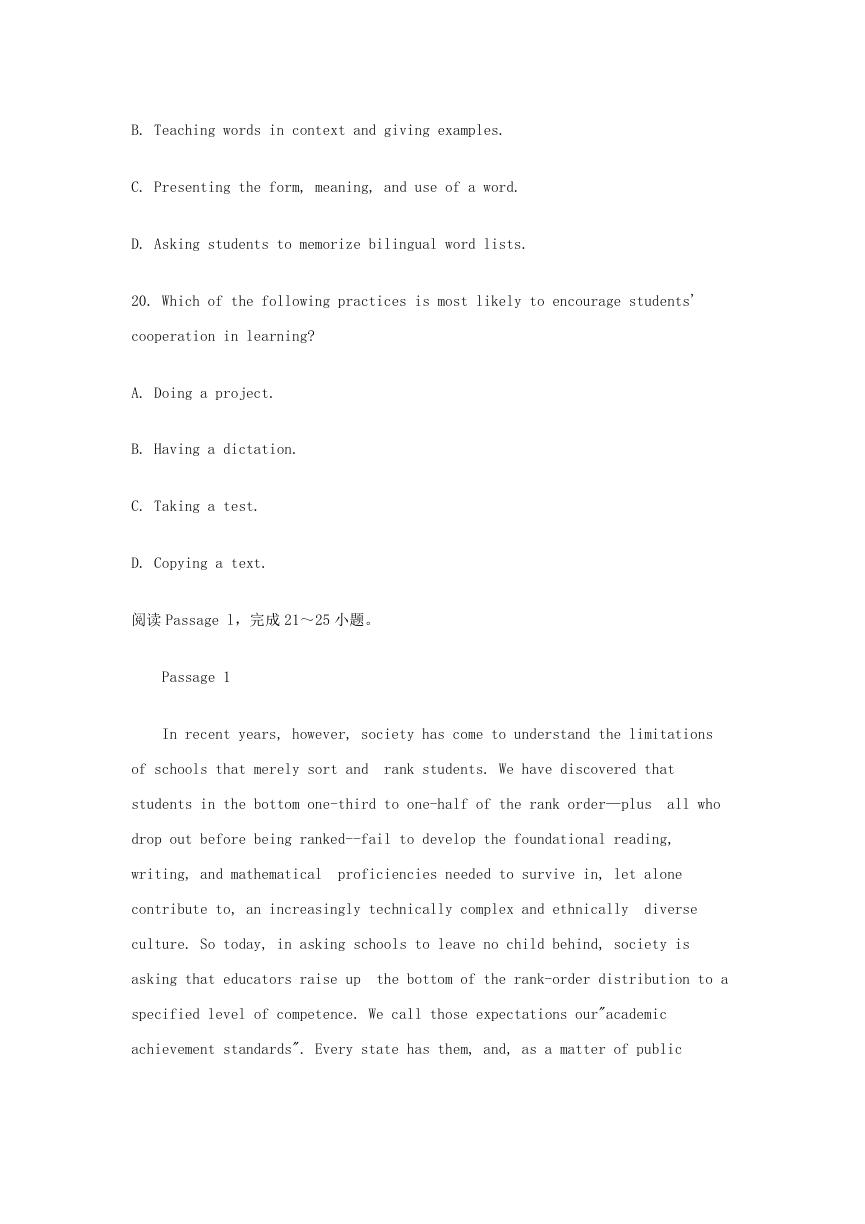
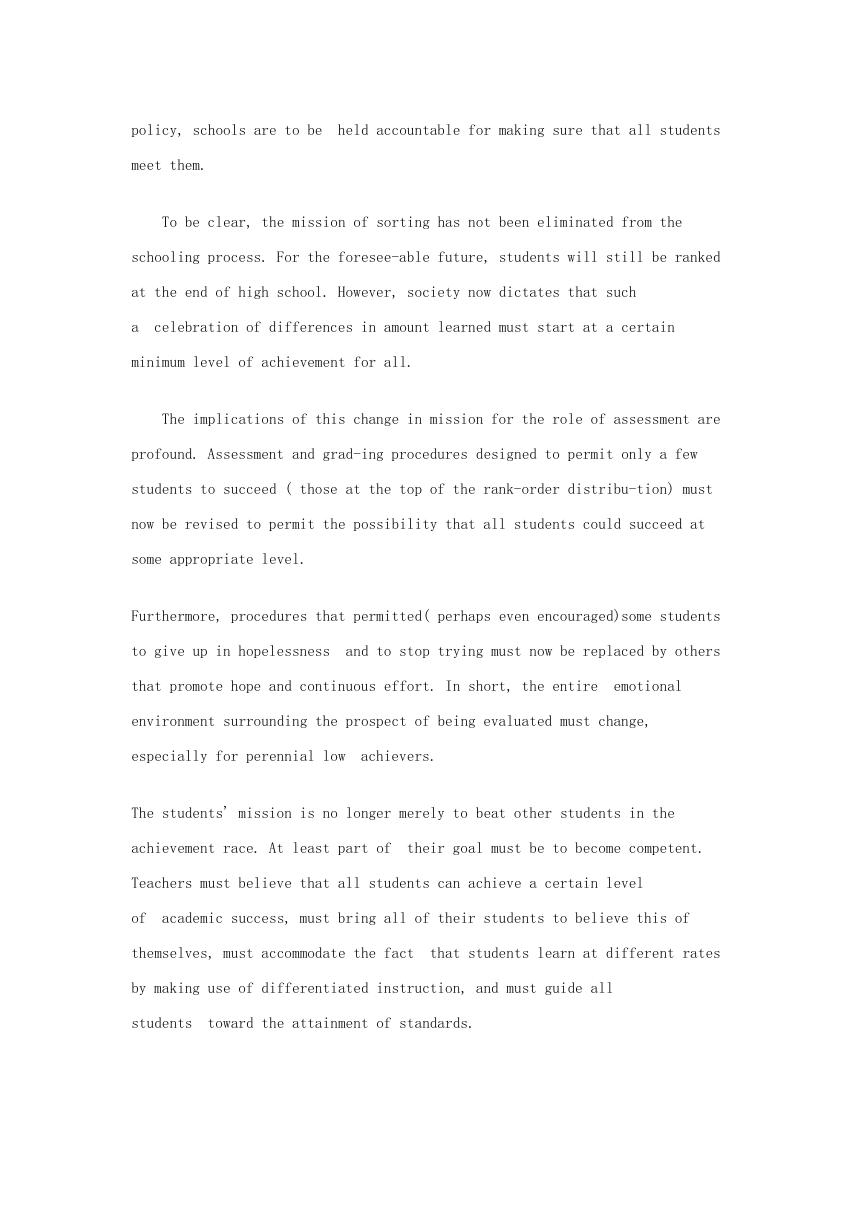








 2023年江西萍乡中考道德与法治真题及答案.doc
2023年江西萍乡中考道德与法治真题及答案.doc 2012年重庆南川中考生物真题及答案.doc
2012年重庆南川中考生物真题及答案.doc 2013年江西师范大学地理学综合及文艺理论基础考研真题.doc
2013年江西师范大学地理学综合及文艺理论基础考研真题.doc 2020年四川甘孜小升初语文真题及答案I卷.doc
2020年四川甘孜小升初语文真题及答案I卷.doc 2020年注册岩土工程师专业基础考试真题及答案.doc
2020年注册岩土工程师专业基础考试真题及答案.doc 2023-2024学年福建省厦门市九年级上学期数学月考试题及答案.doc
2023-2024学年福建省厦门市九年级上学期数学月考试题及答案.doc 2021-2022学年辽宁省沈阳市大东区九年级上学期语文期末试题及答案.doc
2021-2022学年辽宁省沈阳市大东区九年级上学期语文期末试题及答案.doc 2022-2023学年北京东城区初三第一学期物理期末试卷及答案.doc
2022-2023学年北京东城区初三第一学期物理期末试卷及答案.doc 2018上半年江西教师资格初中地理学科知识与教学能力真题及答案.doc
2018上半年江西教师资格初中地理学科知识与教学能力真题及答案.doc 2012年河北国家公务员申论考试真题及答案-省级.doc
2012年河北国家公务员申论考试真题及答案-省级.doc 2020-2021学年江苏省扬州市江都区邵樊片九年级上学期数学第一次质量检测试题及答案.doc
2020-2021学年江苏省扬州市江都区邵樊片九年级上学期数学第一次质量检测试题及答案.doc 2022下半年黑龙江教师资格证中学综合素质真题及答案.doc
2022下半年黑龙江教师资格证中学综合素质真题及答案.doc